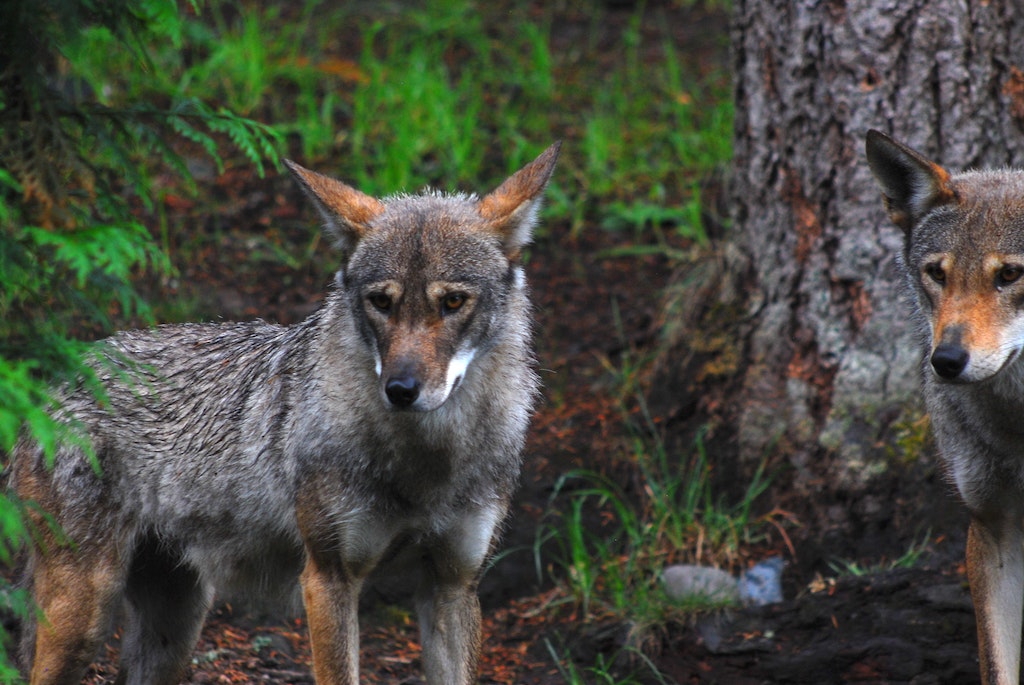Let’s start with a question. What is the most endangered wild animal in the U.S.? If your pick is the critically endangered red wolf, you are right! Not only are they endangered, but they are also an underdog species — meaning they are unjustly feared and misunderstood.
So what makes an animal endangered? Any animal or plant that is so rare it might go extinct is considered endangered. And going extinct means it is gone forever. It is no longer on our planet. Pretty scary. With less than just 20 red wolves left in the wild, they are on the brink of extinction. But there is hope. Endangered also means there are a lot of folks working hard to save them and you can be one of them!
So, we need your help! Very few people know about red wolves. But why should you care? Let’s find out.
We fell in love with red wolves at the NC Zoo. It was love at first sight! Just like Dale and me. (Some of you know our story of getting engaged in 8 days, in our 60s — proving it is never too late, but I digress.)
One of the most endearing things about red wolves is they generally mate for life, which is remarkable since only 3-5% of all mammals partner for life.
Another astonishing fact, the male and female care for their pups together. Again, a mere 5-10 % of father mammals help care for their offspring. Wow, we had no idea. Now you are starting to see why our endangered red wolves are so special! They are loving, caring parents who both take on the responsibility of pup rearing.
Red wolves have such a challenging time increasing their populations because they only give birth once a year in the spring. Puppy litters range from 2 to 8, with only about 50% of the pups surviving in the wild until the age of one.
But once born, the male brings food to the mom while she is nursing and caring for the pups. The newborns are blind and completely helpless until about 2 weeks old. After 3 weeks, the pups will start exploring their surroundings. And while it sure is tough being a pup, they love to play, horse around with each other and generally annoy their parents.

And to see why we love these magnificent underdogs, watch our newly released film (just 4 minutes long) “For the Love of Red Wolves” with never before seen footage of wild pups born in the Spring of 2022. Be prepared to fall in love.
Another thing we love about our endangered red wolves? They are the only wolves native solely to the U.S. Sure, the gray wolf is native to the U.S. but it is also found in Canada and Mexico. So red wolves are truly American, which is why we often refer to them as America’s red wolves. An amazing treasure for our country.
And just like the American bald eagle, if we work together, we can save them from extinction. Currently, their only population is in Eastern North Carolina, but their historical range goes from New York to South Florida and west to Texas. Today, USFWS is working hard to identify new locations where they can be reintroduced.
As an underdog, lots of people unjustly fear wolves. So shouldn’t we be afraid? Remember Little Red Riding Hood & The Three Little Pigs? Absolutely not. They are way more afraid of us than we are of them.
In the history of the world (and that is a very long time), not one human has ever been attacked or hurt by a red wolf.
And why are wolves important?
We sometimes hear folks say the wolves are eating all the deer. And our response? Let’s talk.
Recent studies show both quail and deer numbers increase when wolves are on the landscape. Hmmm.
Why? Well, the wolves generally eat the sick and weak deer which helps keep the herds healthy. As for quail and songbirds, the wolves eat raccoons & opossums (and don’t get us wrong, we love these critters too) which feed on the bird eggs. The more eggs that hatch, the more birds.
Even native plants benefit. Since wolves keep deer moving, they don’t overgraze the plants. As a result, native plants have a chance to flourish which also keeps the invasive species at bay.
Where red wolves live in the wild, other animals and native plants are generally healthier, keeping our ecosystem balanced. A win/win.
For free photos, films and videos to download, see our Red Wolf Gallery. Photographers, filmmakers & red wolf partners have donated the use of their images to help you spread awareness of these magnificent animals.
The best way you can help is to share posts on social media and tell everyone you know about red wolves.
One way we help is by teaching students in K-12th grade about red wolves and their importance to their environment. Each student makes a red wolf head from clay to take home. To support our teaching, including buying art supplies, and learn more, please consider a donation at our website Weiler Woods for Wildlife.
Loti Woods and Dale Weiler are the founders of Weiler Woods for Wildlife. Their mission is to inspire folks, using art and education, to become champions for wildlife’s underdogs, especially the endangered.

